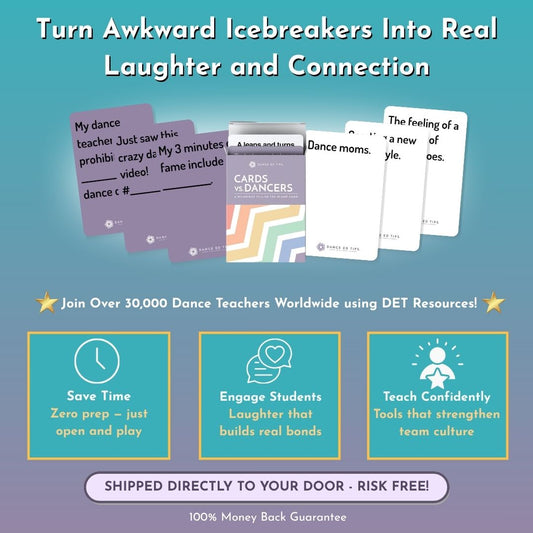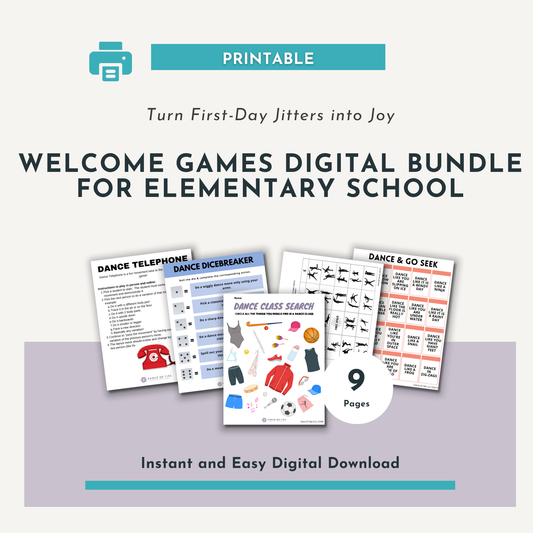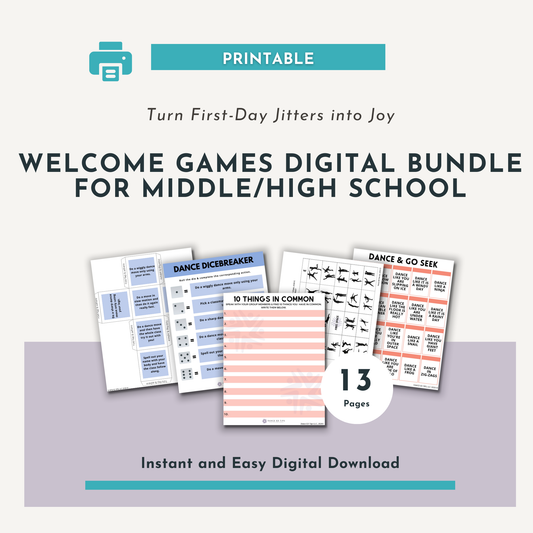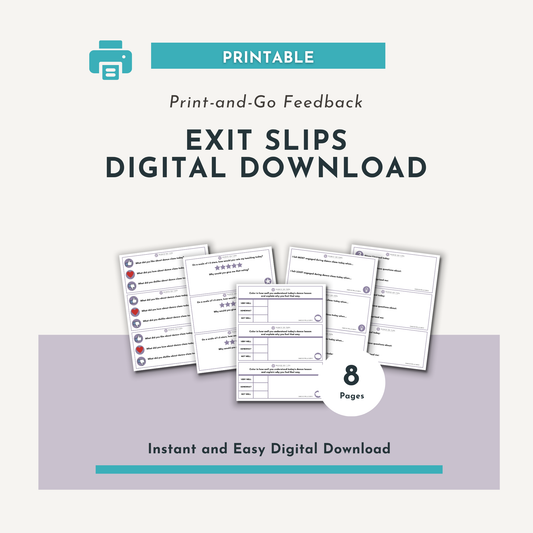By: Olivia Mode-Cater
Last semester I taught a course at Hofstra University called “Educational Technology in Dance Education.” At the beginning of the semester, I had the students reflect on their experiences with Technology in the dance classroom. Victoria Speicher, junior dance education major at Hofstra, shared that “Personally, teachers have only used a phone or tablet to record dances and that is the extent of technology in classrooms that I have been in.” This is quite common in dance classroom as we often don’t have the time to think about how else we can implement technology in the studio. Victoria later pointed out though, “In the dance classroom, technology can be used in an infinite amount of ways many have not even thought of yet.” That is why for the students’ final project, I had them research and do a presentation on an app or website designed to help dance educators. On the day of the final I was impressed with the students’ findings and today I am going to share some of them with you. So, if you’re looking to include some new technology in your dance classroom, check out Hofstra University’s dance education majors’ top 4 recommended websites & apps.
- Seesaw by Alanna Newman

Seesaw is a platform which enhances student engagement for grades K-12. It stands apart from the copious amount of other applications due to its ability to create a powerful learning loop between students, teachers and families. Seesaw empowers students to create, reflect, collaborate and share. It enables students to showcase their knowledge by utilizing photos, videos, drawings, text, PDFs, and links. Students can utilize this app to show their work and thought processes in real time! They can accomplish this by submitting a video of themselves working through a dance phrase or improvisation, taking a picture showing their alignment which can then be analyzed and improved upon, taking a voice recording of themselves explaining their thought process for an assignment or by uploading a file to demonstrate their learning. Seesaw has the ability to create a stronger sense of community in the classroom because students have the option to collaborate with one another using peer-to-peer feedback to offer suggestions on content, assignments and ideas.
My favorite feature is that teachers can utilize the Community Activity Library for inspiration with their lessons. The activities are listed with instructions and necessary materials which make recreating the activities a breeze. This makes it simple to implement fun, multi-sensory activities within your lessons. Students are also able to provide feedback on how they view their progress in the classroom. This assists with creating reflective learners and the teachers monitoring of their progress. Students are able to truly take ownership of their learning.
Teachers at all grade levels and across all content areas can utilize Seesaw in order to keep digital portfolios of their students work with unlimited storage space. A beneficial feature of Seesaw is that it demonstrates your students’ progress over time. It allows teachers to comment directly on student submissions to provide individual feedback which allows all students feel seen and heard.
- WordArt by Julie O’Neill

WordArt (wordart.com) is a website that creates “word cloud art” personalized to the words and phrases you chose. The easy-to-use generator enables the user to create personalized and unique word cloud art, including the ability to customize the words, shapes, fonts, colors, and layouts. The standard version of the website is free to use, but they also offer higher quality download packages for purchase, but the free version does exactly the trick for classroom use!
The website layout is fairly easy to use, once you access the homepage all you need to do is go to the “create” option and start typing in a list of words that you want to be included your WordArt design. Once the words are typed, you can adjust the size of each word to put emphasis on words you would like to appear larger. Then, proceed to go down the list of editing tabs and make changes to the shape, font, layout, and style of your design as you wish. Once your design is complete, you can download it to your desktop, either as a PNG or JPEG file and upload it to any platform of your choice.
There are a few ways in which WordArt can be used in the dance classroom, as an introductory assignment in the beginning of the school year you can ask students to generate a list of words and phrases that describe themselves. Then, students can create their own unique design on WordArt displaying their words and sharing them with the class as a “get to know me” activity. Also, another way in which WordArt can be incorporated into a dance lesson would be to have students brainstorm a list of elements throughout a unit that are seen in the certain style or technique you are focusing on, and as a unit project students can present the list they generated in the form of a WordArt design to demonstrate the knowledge they gained about that particular unit. An easy way to incorporate WordArt into a choreography lesson is by having students generate a list of words and phrases that describe the piece they are choreographing or are a dancer in. Then, they can present the list in the form of WordArt using colors, shapes, and fonts that they feel represent the theme of the piece. In doing this, students can then use the WordArt they created as a way to inspire new choreography and/or meaning behind their work that they may have not developed on their own.
WordArt is a simple yet, original and fun tool that can be utilized in a variety of ways within the dance classroom. Students love that they have the freedom to control all the elements of design and presention their WordArt, and it is an easy way to get students excited to do assignments. For more inspiration and examples of WordArt you can visit the gallery page on their website and I will also attach a few examples of my own work! Now get designing!

- Nearpod by Stephanie Bergen

Nearpod is a practical website and app for teachers of all disciplines, and it is especially useful for dance educators. It is a great way for educators to connect with one another, and a place to obtain materials and lessons. If a teacher ever feels stuck when planning for a class, they should turn to Nearpod’s library.
Nearpod’s library is full of teacher-developed lessons for all subject areas. These lessons can be made interactive with features including quizzes and games. Upon downloading Nearpod and creating an account, educators are able to find lesson plans and activities for all interests possible. Additionally, teachers can upload their own lesson plans to make them accessible to their own students, or if they feel that their lesson would be a strong resource for another educator.
Once a lesson is uploaded to Nearpod, a teacher can make the lesson live. A class code will be created, and the lesson can be viewed on each students’ device. As an alternative, teachers can make each lesson student paced, and students can complete the lessons, as well as the assignments in them on their own time from anywhere. This app is especially useful for dance educators because it is a great way to incorporate technology in the dance classroom, while still ensuring that the students are dancing.
- Kahoot by Normani Thomas-Smiley

Kahoot is a platform that makes it easy to create, share, and play learning games or trivia quizzes. It expands further than the classrooms, as it is played in business training sessions, sporting, and cultural events, or in any social and learning context. Kahoot’s mission is to, “Make learning awesome! We want to improve education all over the world and help everyone of any age, aptitude or circumstance unleash the magic of learning. Our vision is to build the leading learning platform in the world. Instead of looking down into their textbooks or devices, learners in schools, offices and other social settings are encouraged to look up while playing and connecting with each other. For us, engagement is about unlocking everyone’s potential.”
To access this tool, all you have to do is log on to www.kahoot.com and begin to explore all of the endless opportunities available for you and your students. When first visiting the website, you will see that Kahoot provides you with the opportunity to explore how to use the source within schools, businesses, your home, and work. You can select whatever setting is appropriate for you and your needs.
After selecting the appropriate setting which in this case would be “schools,” you are brought to a page that gives you information about how you can use this resource. The first way is to create a game of kahoot in minutes from scratch, using their question bank to mix and match questions, edit a template, or reuse existing games. The second option available is to host live, which allows you to host a kahoot game live within your classroom. For this option, it is recommended that you have a big screen so everyone within the classroom can see. This is due to the questions and answer alternatives being displayed on the shared screen, while the students answer on their devices. Next, is assigned challenges that allow students to expand their learning outside of the classroom by assigning student-paced challenges that they can play from anywhere, or anytime on their own devices. The questions and answers for this will be displayed on their screens. Lastly, there is the share option that allows you to encourage your students after playing a game to create and share their own kahoots. Furthermore, if you decided to sign up for the pro or premium account you can co-create and share kahoots with other teachers within your school. This is a great tool for connecting dance with other subjects throughout the school to help students further their knowledge of a specific theme/concept which, as we know can provide students with the chance to formulate important connections.





